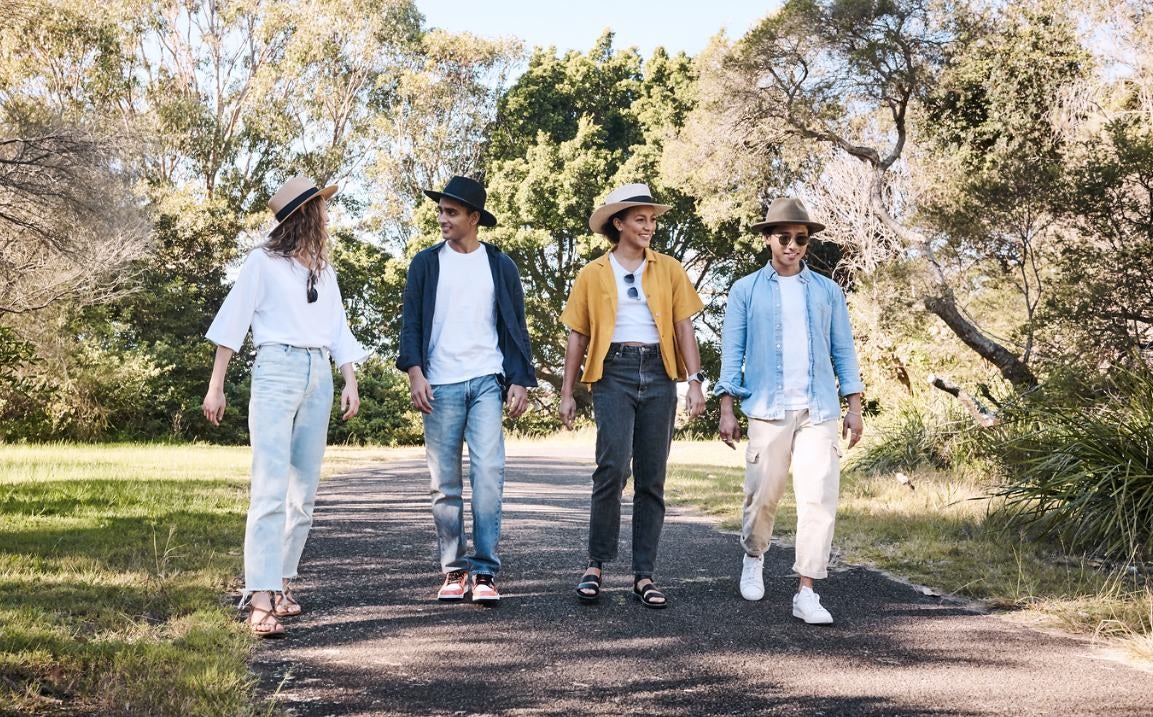Blog
Protecting your skin from incidental sun exposure
13 November 2024

It’s time to make sun protection a habit! National Skin Cancer Action Week 2024 runs from 17-23 November and this year we urge all Australians to make sun protection part of their daily routine, all year round—and not just when you head to the beach or pool.
As summer approaches, Australians are reminded to think about those day-to-day activities where they can be exposed to UV radiation. It doesn’t take long for skin damage to occur, which increases the risk of developing skin cancer.
Incidental sun exposure—those unplanned moments spent outside at a café, walking the dog, or waiting for a bus—can really add up. The UV index will reach extreme levels across Australia over the summer, so we encourage Australians to be prepared before heading outside. Remember to make sure you protect your skin using all five forms of sun protection: Slip, Slop, Slap, Seek and Slide.
Australia’s national cancer
Australia has the highest rate of skin cancer in the world. In fact, it is estimated that two in three Australians will develop skin cancer in their lifetime—a sobering thought.
Skin cancer can be prevented. By following the five SunSmart steps, you can significantly reduce your risk, at any age. Let’s dive into what incidental sun exposure is and how you can protect yourself from harmful UV radiation.
What is incidental sun exposure?
Protecting your skin at the beach or if you plan to be outside is, of course, extremely important, but incidental sun exposure—those moments when you’re exposed to UV radiation without thinking about it, are just as important.
Imagine you’re walking to work, heading to the shops, putting out the washing or running errands outside. It’s these seemingly innocuous moments that can accumulate, leaving your skin vulnerable to damage.
To find out how UV penetrates the skin and how long it takes before the damage begins, we consulted Dr Adriene Lee, President of the Australasian College of Dermatologists. Dermatologists are specialists trained in the diagnosis and treatment of all skin diseases including skin cancer.
Dr Lee explains that there are two types of UV radiation from the sun; UVA and UVB, that reach the Earth’s surface. UVA penetrates deeper layers of the skin which can trigger chemical reactions and damage the DNA of the skin cells.
“UVA also breaks down the collagen and elastic tissue in the skin causing thick, leathery, aged skin with wrinkles, pigmentation, dryness and broken blood vessels.”
However, UVB can be harsher, “as it gets into the DNA in the outer skin cells and damages it directly. Your cells can try to repair the damage but eventually with more UVB exposure, there is more damage to the DNA and the cells can’t keep up with the repair.”
Exposure to UVA and UVB radiation can cause pre-cancerous skin spots and skin cancers including melanoma, squamous cell and basal cell carcinomas.
“It does not take long for UV to damage the skin. The more incidental episodes of sun exposure you have, the more likely this build-up of UV damage to your cells will cause a skin cancer in the future.”
The five SunSmart steps
Whether you’re just stepping out, exercising, commuting or walking the dog, these five steps can keep you protected:
1. Slip on protective clothing
Choose outfits that cover as much of your body as possible—think shirts with long sleeves and loose-fitting pants. Some fabrics even come with an ultraviolet protection factor (UPF) rating to help you gauge their effectiveness.
2. Slop on SPF50 or SPF50+ broad-spectrum, water-resistant sunscreen
Apply a generous amount of SPF50 or SPF 50+ sunscreen to clean, dry skin at least 20 minutes before heading outside. This is so it has time to bind to your skin.
Reapply your sunscreen every two hours—you could even set reminders on your phone, so you don’t forget! But remember, sunscreen is your last line of defence so always combine it with the other sun protective measures.
3. Slap on a broad-brimmed hat
A hat is essential if you’re heading outside. Choose a broad-brimmed, legionnaire or bucket-style hat that covers your face, neck and ears. These are common spots for skin cancers to develop and can easily be forgotten. Caps are not recommended as they don’t provide full protection for the face, ears and neck. Leave a suitable hat in your car or by your door so you’re always prepared!
4. Seek shade
Seek shade under the trees, structures or an umbrella with a high UPF rating. Just keep in mind that UV rays can reflect off surfaces, especially if you’re near water, so make sure you combine shade with other protective measures.
5. Slide on some sunglasses
Don’t forget your sunnies! A good pair of wraparound sunglasses, when worn with a broad-brimmed hat, can block up to 98% of UV radiation from reaching your eyes. Choose close-fitting ones that meet Australian Standards for optimal protection. Keeping a pair in your glove box or everyday bag is a good way to make sure they are always nearby.
Small changes can mean BIG protection
Protecting your skin can become part of your routine. Just a moment of simple planning each day can make a world of difference. And remember, it’s never too late to start. Your future self (and skin) will thank you!
Dr Lee says, “If you have had a lot of UV exposure over the years, and you have other risk factors such as fair skin, you are at a higher risk of skin cancer. You should check your skin regularly and if you see something new or changing, see a GP or dermatologist.”
Get inspired: Conquering Skin Cancer
Conquering Skin Cancer is a documentary and campaign aimed at reducing skin cancer rates and deaths. Through compelling interviews with survivors, experts, and celebrities, it advocates for enhanced prevention, early detection, equitable access to treatment, and innovative research.
Find out what it means to stay safe in a high UV environment. Catch it in cinemas this summer.
So, as you sip your morning coffee or take that leisurely stroll, keep these tips in mind. Keep your skin safe and beautiful and enjoy the sunshine with peace of mind.
Resources
- To understand more about why sun exposure causes skin cancer, visit our no-nonsense UV low-down.
- Find out how why we need to End The Trend of dangerous suntanning culture at Skin Cancer - End The Trend | Cancer Council
Article written by Claire Wharton and Georgie Price, Cancer Council Australia and co-authored by Dr Adriene Lee, President of the Australasian College of Dermatologists.
Tags

